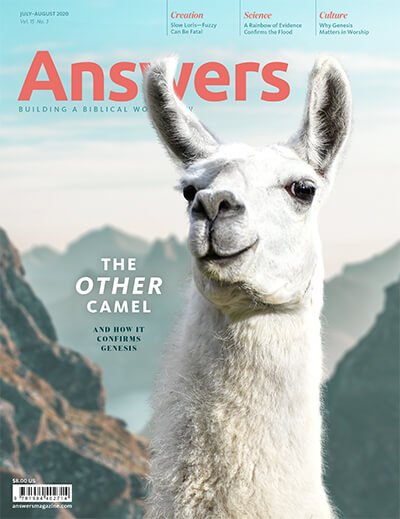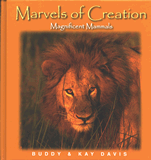Camel Diversity—Spitting Image
Despite living continents apart, this caravan of creatures clearly confirms the Bible’s history.
Where I live, there are more cows and goats than people. The rolling foothills of America’s Appalachian Mountains cause the roads to dip and rise back up, giving you panoramic views of cattle wading through ponds and Nigerian dwarf goats tearing up grass and weeds by the mouthful.
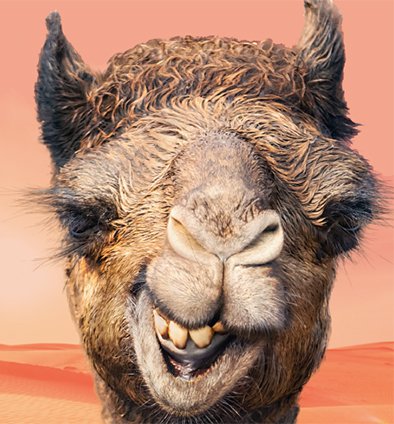
Rarely, though, do you see those cows and goats by themselves. In the fields you’ll spot the stiff manes of donkeys and the white coats of Great Pyrenees dogs, sentries against coyotes and other terrors of the night for livestock.
But look carefully enough, and you may spot something a little more unexpected guarding sheep and goats—llamas! With their long necks, fluffy bodies, pointy ears, and spindly legs, llamas don’t look like they’d make the most ferocious watchers. Surely a coyote wouldn’t be bothered by such a docile-looking pack animal.
Yet there they are, lying in the sun near a herd of goats on the back roads of Tennessee. In fact, farmers here and elsewhere have increasingly turned to the inquisitive animals to replace guard dogs—and if you’ve ever seen a llama in action, you know why.
Llamas can raise a racket, kick or spit on would-be intruders, and even kill a predator by repeatedly striking it with their hooves. In one study, farmers reported that their loss rate for livestock fell from 21% to 7% by switching to guard llamas.
But it’s not just llamas. The related alpaca has also become something of a farmyard darling. Turkey farmers in the United Kingdom, for example, have herded the curly-haired watcher into pens to keep poultry safe from sly foxes.
But llamas and alpacas are also guarding something more important—a history that stretches across four continents and 6,000 years. The backstory of their origin points to the truth of God’s Word. But to fully appreciate their history, we have to talk about another animal on the other side of the world.
Cousins to a Camel
Llamas have a distinct face. With their curled lips, thick eyelashes, and crooked teeth, you know one when you see it. But they’re not the only animals with this comical visage. On the opposite side of the world from the llama’s native range of South America, you’ll find another creature with a similar smirk—the camel.
Granted, camels and llamas have some major differences, starting with the obvious. Where llamas and their cousins—alpacas, vicuñas, and guanacos—make it just fine with smooth backs, Old World camels of Africa and Asia have their trademark humps.
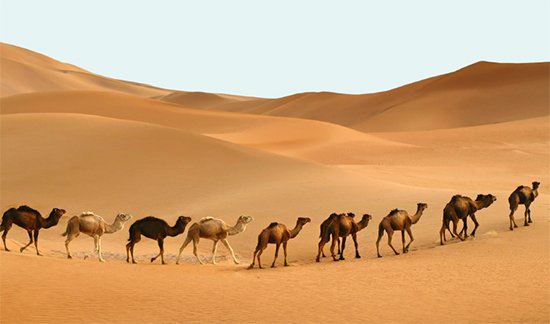
Camels also have other design features that set them up to succeed in sandy, arid climates. After all, there’s a reason people since as far back as Abraham’s time (Genesis 12:16) have depended on these beasts of burden to carry them through the deserts. They lose very little water in their waste, have nostrils that help them return water vapor back to their bodies when they exhale, and can absorb quite a bit of heat during the day without needing to sweat or pant. They also have oval red blood cells (instead of round ones like ours) that allow their blood to keep flowing even when they lose up to 30% of their body weight in water. (For comparison, even losing just 2.5% of our body weight in water can cause our mental and physical abilities to decline because our blood becomes thicker and harder to pump.) In addition, a camel can drink some 25 gallons (95 L) of water in about 10 minutes, whenever it finds the precious liquid. Those oval red blood cells allow them to absorb lots of water quickly. But in some ways, all camelids (that is, the camel kind) are the spitting image of one another. Aside from having those unique oval red blood cells, all living camelids have two-toed feet with large foot pads that give them traction on all kinds of surfaces (from the sandy Sahara to the snowy Andes Mountains); tough lips that allow them to gobble up even the prickliest of plants; insulated fur for a variety of environments; and thick eyelashes to block out sand and dust. In fact, the camel kind’s success across the globe is one of the most tangible examples of how species diversified when they exited the ark after the flood.
A Fork in the Family Tree
The Bible records the history of a world that’s much younger than the widely accepted secular dating. Instead of billions of years, Genesis lays out a world that’s no more than about 6,000 years. And, as you’ll see, a younger age plays very well into the camel family tree.
According to non-Bible-believing scientists, camels originated in North America about 45 million years ago. They think this because that’s where “camel-like” fossils are found buried deepest in the rock layers, and, so far, no other camel fossils have been found outside North America until you get higher up in the geological record.
The Bible paints a different picture that helps us better interpret the fossil evidence
But the Bible paints a different picture that helps us better interpret the fossil evidence (and deal with modern evidence). According to Genesis, all the air-breathing, land-dwelling creatures outside Noah’s ark died (Genesis 7:21–22). Only the ones aboard survived, and they left the ark to spread out and multiply (Genesis 8:17). Two members of the camel kind obviously made that voyage. While the fossil evidence is too sparse to know exactly what the original survivors would have looked like, it is possible that they were much smaller than the camelids we find today. (God gave most animal kinds the genetic information for a variety of sizes. You can see this for yourself with dogs, such as the standard poodle compared to the toy poodle.)
According to fossil evidence, camels once roamed America’s west. So how did camels that landed in the mountains of Ararat end up in North America? Well, first, it’s important to remember that finding camel fossils only in a certain area doesn’t mean that camelids lived exclusively in that area. Much of the fossil record comes via rapid burial during and soon after the flood, when smaller floods and catastrophes covered animals quickly so that they were preserved.
That said, we shouldn’t be surprised at camels making it to North America—or anywhere else in the world. A flood like the one described in the Bible would have flattened forests around the world and ripped up an immense number of trees. Those uprooted trees, mixed with other vegetation and debris, floated in large mats for years, just as we see with the trees uprooted by the eruption at Mount St. Helens in 1980.
Floating tree and vegetation mats bumped around the oceans, carrying a number of organisms and seeds from one land mass to another. If that seems incredible, keep in mind that natural floating islands that support trees, animals, and even houses exist today, such as the phumdis of Loktak Lake in northeast India.
In addition, soon after the flood, the ice age caused the ocean levels to drop. Lower water levels exposed various land bridges that connected continents and islands. That would have made the camel’s global trek that much easier—and we’ve already seen that these animals are equipped to survive in even the toughest environments.
Compliant Camelids
The camel kind certainly heeded God’s command to spread out and diversify throughout the earth.
The camel kind certainly heeded God’s command to spread out and diversify throughout the earth. Some were huge, such as the humped Titanotylopus that stood 11.5 feet high (3.5 m) at the shoulder or Megatylopus that tickled the sky at roughly 14 feet (4.2 m). For comparison, the tallest camels today come in at around 7 feet (2.1 m). Other camelids seem to have taken to their environment in much the same way as gazelles today. For example, the Stenomylus had a small, streamlined body that seems suited for sprinting across the ground at high speeds. Still others had necks similar to giraffes. For example, the “high camel,” Aepycamelus, had longer neck bones that allowed it to reach nearly 10 feet up (3 m).
In addition, camelids found their way down to South America and set up shop in some rugged terrain. Two of those species are the guanacos and the vicuñas, though you may be familiar with the domesticated versions: llamas and alpacas respectively. These animals have supplied fertilizer, hauled loads, and provided warm clothing to the peoples of Peru and other countries for at least 2,000 years.
In Arabia and Asia, the camel kind flourished in some of the most inhospitable climates. The two-humped Bactrian camels of central Asia have a long wooly coat to deal with cold winters on the steppes. Their tough feet deftly handle the rocky terrain. Arabian camels (also called dromedaries) have a single hump and are most likely the camels mentioned in the Bible as beasts of burden. Like the Bactrian camels, Arabian camels have three eyelids that allow them to keep out the dust stirred up by frequent sandstorms. Two of the eyelids have long eyelashes while the third is thin and works something like a windshield wiper to clean away gunk.
The camel kind has spread through other more artificial ways as well. For example, many dromedaries (and some Bactrian camels) went to Australia during the 1700s to help with transportation and construction. Some were released to fend for themselves, and the tough creatures did just that. Now over a million feral camels call the Land Down Under home. And in the United States, the population of llamas and alpacas has grown to over 150,000.
But with these many camelid characters, it’s important to remember that they’re all still part of the camel kind. And that fact stands as solid evidence for the truth of Scripture.
The Modern-Day Camel Family Around the World
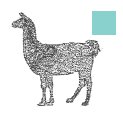
Llamas
Llamas are an entirely domesticated breed. Artwork from pre-Incan cultures show that these animals have been important in South America for at least 2,000 years.
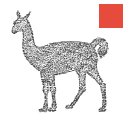
Guanacos
You could say that guanacos are untamed llamas. They make their home in the steppes, scrublands, and mountains of Peru, Bolivia, Chile, and Paraguay. Some even survive in the desert in places that haven’t seen rain in 50 years.
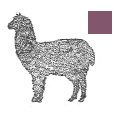
Alpacas
Though noticeably smaller than llamas, alpacas make up for size with the quality of their fleece. Like all camelids, alpacas are known to “spit” when they’re upset or threatened. But it’s not saliva; they’re actually spitting acid from their stomachs.

Vicuñas
While all alpacas are domesticated, vicuñas are the wild version. They produce less excess wool than their cousins, but they thrive in some tough areas of the Andes Mountains with only sparse vegetation and very chilly nights.
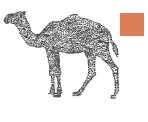
Dromedary
These single-humped camels call the Middle East and Africa home. They have shorter hair than most other camelids and are completely domesticated.
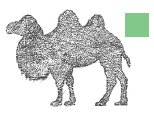
Bactrian
Bactrian camels have two humps and also a mane of longer hair on their necks. These camels thrive in cold and dry climates. Like dromedaries, Bactrian camels are completely domesticated.

Wild Bactrian
The wild Bactrian camels are considered a unique species from their domesticated cousins. There are only about 1,400 them left on reserves in northern China and southern Mongolia.
Still Connected
One of the easiest ways to determine biblical kinds is through reproduction. Animals that can produce offspring together must be closely related. For example, while we don’t see liz-irds (lizard-bird hybrids), we do find grolar bears (grizzly-polar bear hybrids) and zedonks (zebra-donkey hybrids). This isn’t always a foolproof test, however, because genetic changes and degeneration over time can cause even animals within the same kind to lose the ability to reproduce. In fact, the more time the animals are separated from each other, the greater the likelihood that they’ll lose the ability to hybridize.
But there’s something very interesting about camelids. Obviously, we expect llapacas and haurizos (llama and alpaca mixes) and tülus (dromedary and Bactrian hybrids). But back in 1998, scientists bred the first cama, named Rama, from a male dromedary and a female llama. These hybrids have proven to be a true blend of both parents. They look and sound more like a camel, act more like a llama, and split the difference in terms of size, fleece length, and ears (though they don’t have humps).

Why is this important? Well, if camels and llamas truly went their separate ways millions of years ago (as secular scientists claim), hybridization would be improbable. The geographical split with an ocean in between would have separated them for far too long. Because their ranges don’t overlap, they would have no chance to interbreed. In other words, camas shouldn’t be a thing.
But if the camel kind diversified and split up only thousands of years ago, as the biblical timeline records, we would expect hybridization to be a much greater possibility. Rama and his hairy crew are, in a very real sense, a great confirmation of the flood account in Scripture.
We don’t need proof that the Bible is true because we can trust its Author—our faithful God. But it’s always nice to have something as humble as the llama helping to guard the truth of God’s Word. And these fluffy sentinels may do that just as well as they guard those goats.
Answers Magazine
July–August 2020
It’s always nice to have something as humble as the llama helping to guard the truth of God’s Word.
Browse Issue SubscribeRecommended Resources

Answers in Genesis is an apologetics ministry, dedicated to helping Christians defend their faith and proclaim the good news of Jesus Christ.
- Customer Service 800.778.3390
- © 2024 Answers in Genesis




